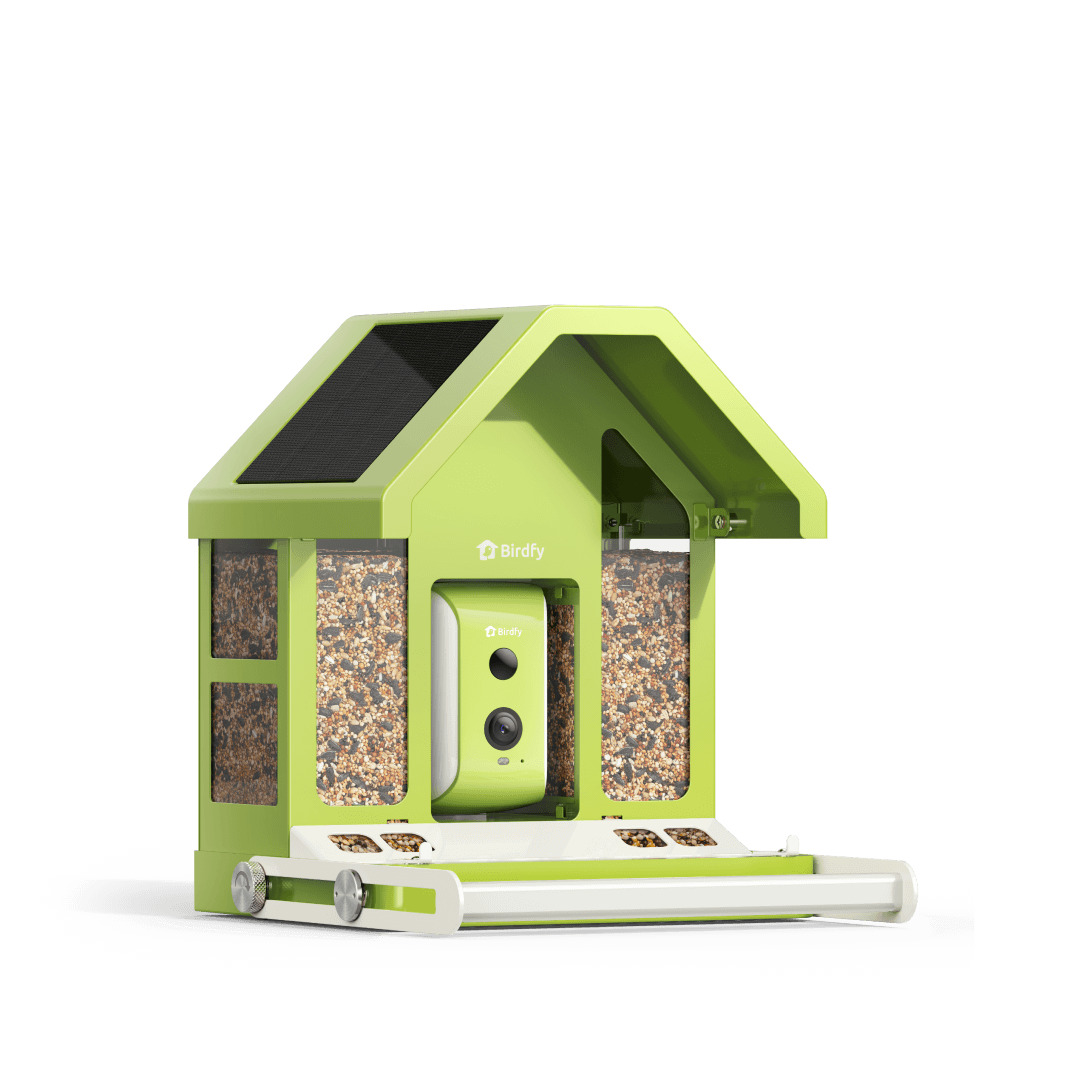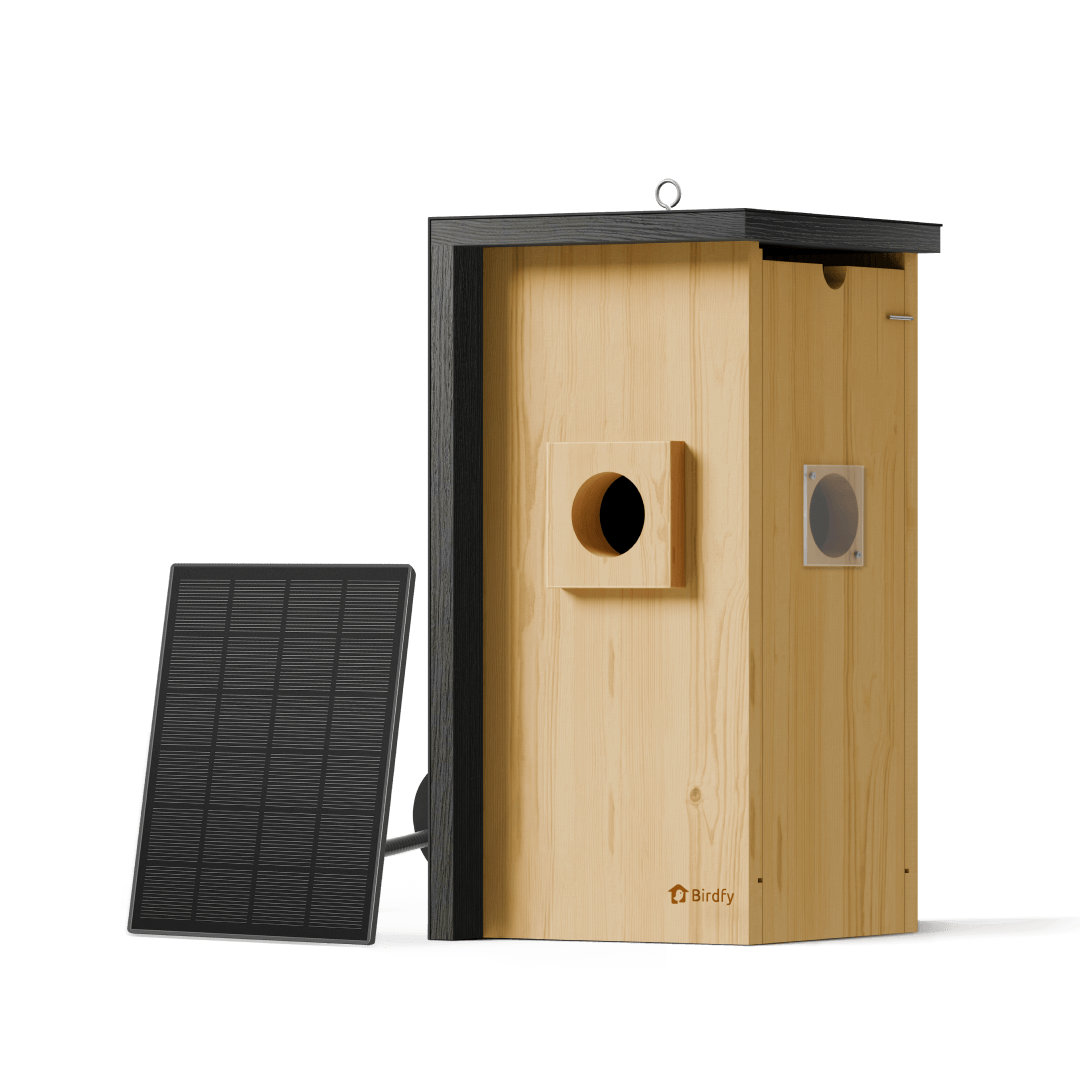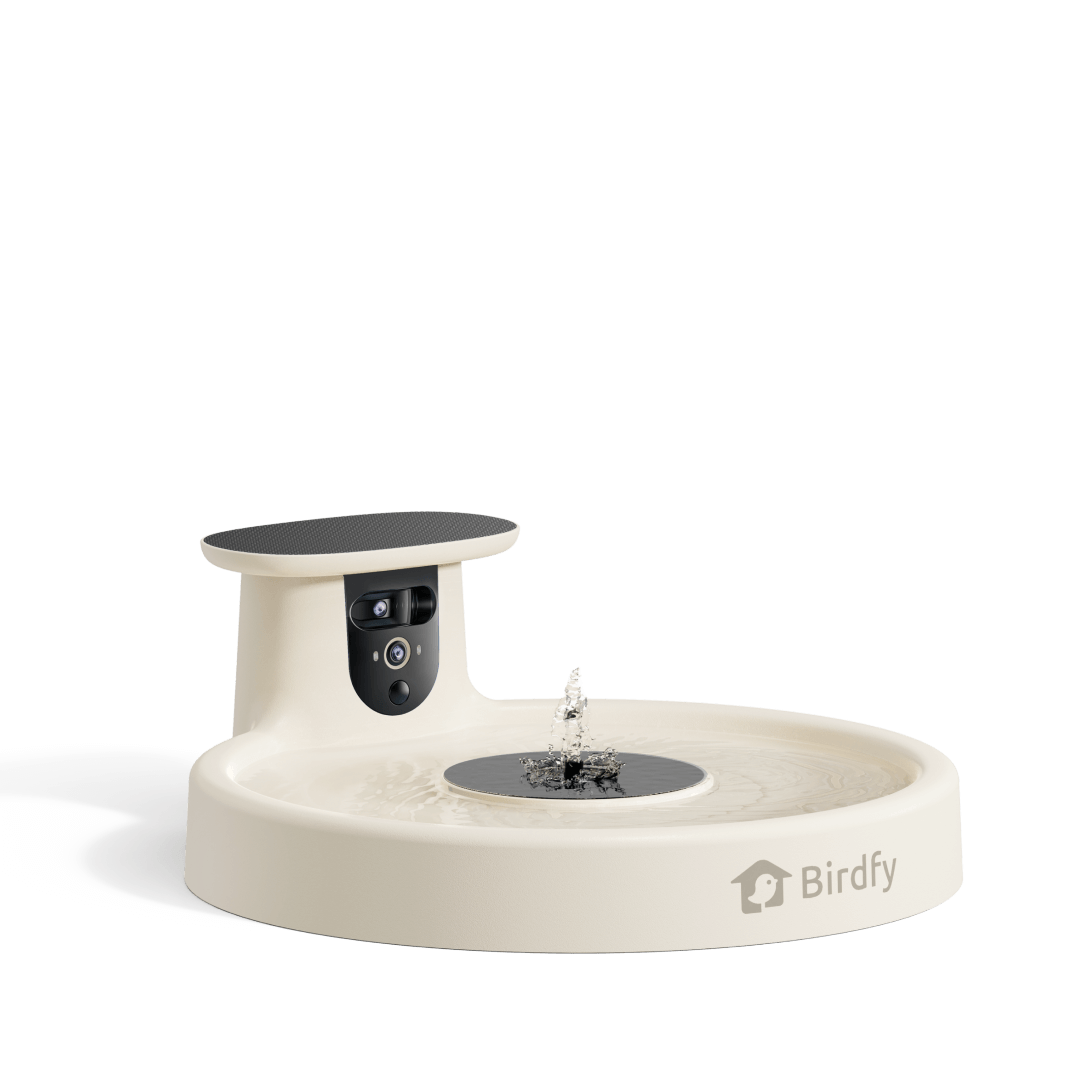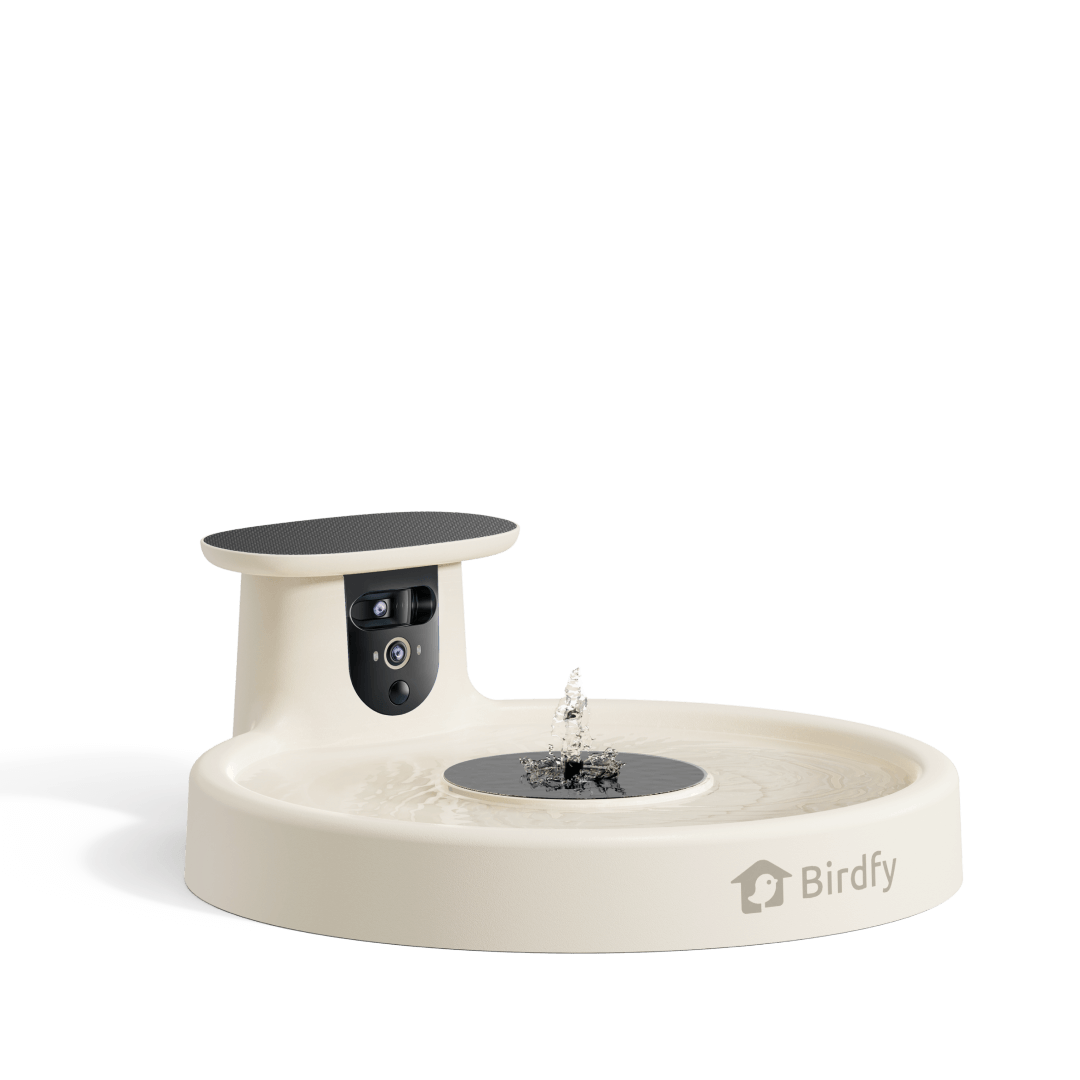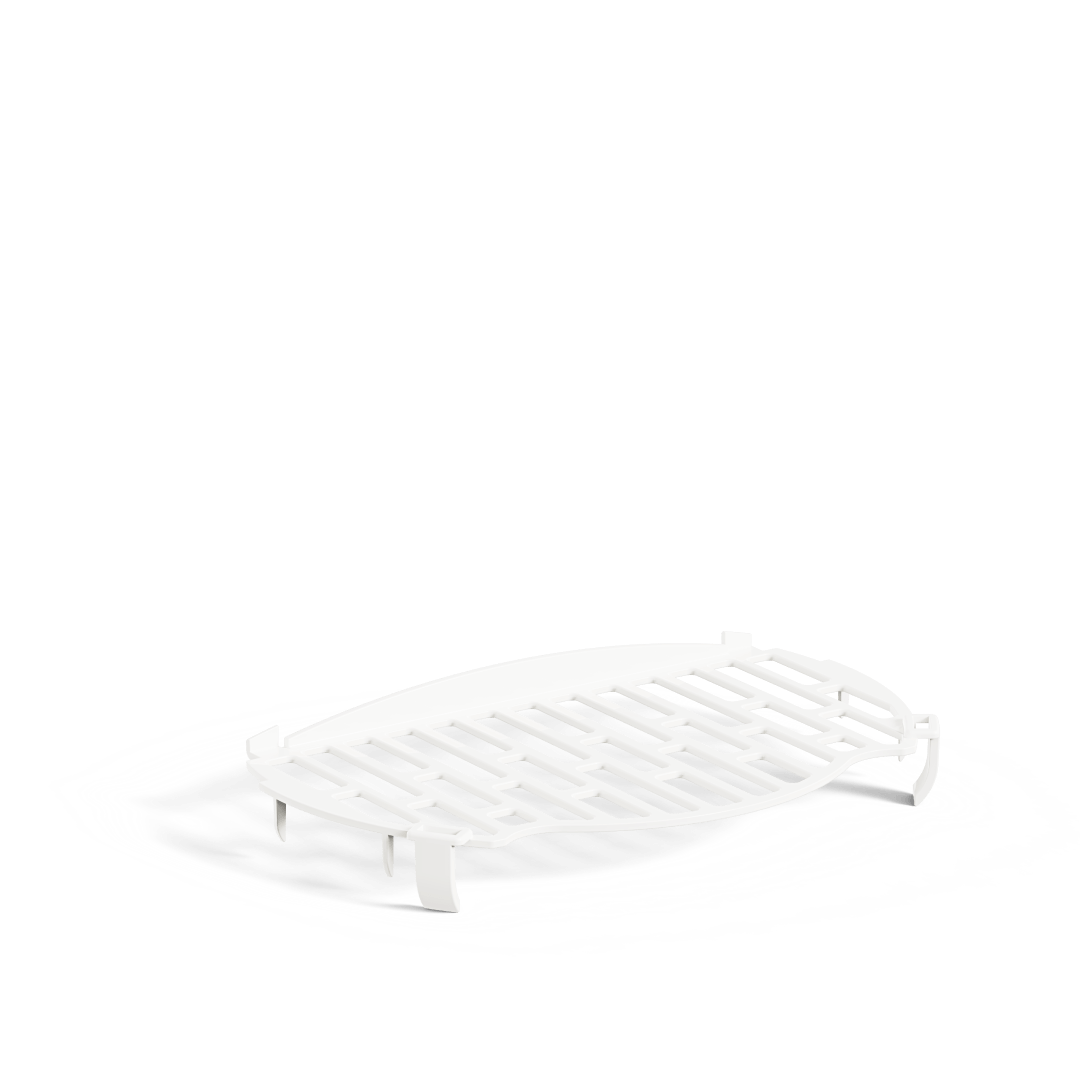Male and Female Hummingbirds – Main Differences
In humans, there are many differences between the males and female of the species that do not directly have to do with reproduction. For example, men are generally larger and develop facial hair, while women are generally smaller and have higher voices. These differences are called sexual dimorphism. Sexual dimorphism may also include cultural factors, such as how males and females are expected to look within a particular society. For many women, this may include changing facial contrast via makeup, or wearing jewelry and colorful fashions.
Hummingbirds are also sexually dimorphic, but it is generally the males that have the colorful “jewel” feathers, engage in elaborate courtship displays, and are often smaller than their female counterparts. Sexual dimorphism in hummingbirds is primarily driven by sexual selection. This evolutionary process favors traits that increase an individual's reproductive success. In many hummingbird species, males have evolved elaborate plumage and aerial acrobatics to attract females. These showy traits, while attractive to females, can also make males more conspicuous to predators. On the other hand, females may be larger and have a longer bill, which may help in producing eggs and feeding their young. They also have muted plumage, which helps them blend in with their surroundings and avoid predators while nesting.
We will look at a few hummingbird species in detail to show their male and female characteristics.
Ruby-throated Hummingbird (Archilochus colubris)
The Ruby-throated hummingbird is the most recognized hummingbird in North America with approximately 35 million migrating here each year. Their range is from Panama to southern Canada and nesting takes place in the eastern half of North America during the spring and summer.
Males arrive in early spring, looking for good territory. Females arrive about a week later. Males attempt to attract a female’s attention with spectacular courtship flights in which a male flies upward 15m or more and then dives down at top speed, pulling up at the last moment to complete a U-shaped pattern; the pattern is usually repeated several times before the male takes a break. Eventually, the female selects a male--perhaps one with a particularly energetic display or the one defending a feeding territory that appears especially rich--and mates with him.
After mating the birds go their separate ways, with females building a cup shaped nest, and males looking to mate with other females. Males play no part in nest building, feeding, or raising their young. The female almost always lays two tiny eggs, and the process from egg-laying to fledging takes about 5-6 weeks. Once the chicks leave the nest, they are completely grown and able to begin foraging on their own.

Male Ruby-throated
The throat (called the gorget) is metallic ruby-red (rarely has a golden or bronze cast); back is metallic green or bronze-green; wings near-black; tail feathers pointed and all dark (no white tips); tail forked; breast and belly usually brownish-gray; flanks metallic bronze-green; crown metallic dark green. The white area below the gorget may appear to create a light ring around the bird's neck. Because of the adult male's gray breast, dark tail, and red gorget, he often looks much darker than a female or juvenile male--especially in poor light. The average male is about 3 inches long, with a 4-inch wingspan, and weighs about 3.4 grams.

The throat of the female is white, or with occasional faint buffy streaking (very rarely a black or red throat feather may occur in an old female); back is metallic green or bronze-green; wings near-black; tail feathers rounded; outer three feathers white-tipped; tail fan-shaped; belly and vent white, flanks light brown; crown metallic dark green. The average female is larger than the male and is about 3.5 inches long, with a 4.3-inch wingspan, and weighs about 3.8 grams.

Interesting fact: Juvenile male Rubythroats masquerade as females with white tipped, rounded, tail feathers and no full gorget until after their first winter migration, when they attain their adult male plumage.
Green-breasted Mango (Anthracothorax prevostii)
The Green-breasted Mango is a fairly large hummingbird whose range is from eastern Mexico through most of Central America, and into Colombia and Venezuela. It is generally non-migratory. However, some Green-breasted Mangos breed in northeastern Mexico from late February through September, and move south for the winter season.

The male Green-breasted Mango can grow up to 4.3 – 4.8 inches in length and weighs about 7.2 grams. As with many of the larger hummingbird species, the male is slightly bigger than the female. It has vibrant plumage. The back, wings, and crown are a glossy, metallic green. The throat and chest are a velvety black, creating a striking contrast with the green upperparts. The tail is a deep, iridescent purple, especially noticeable when spread during flight or courtship displays. The underparts are a metallic green, similar to the upperparts.

The female Green-breasted Mango can grow up to 4.3 – 4.8 inches in length and weighs about 6.8 grams. It is less vibrant than the male but still quite beautiful. The back, wings, and crown are a duller green compared to the male, often with a bronze or copper tint. The throat and chest are white with a prominent black stripe running down the center. The tail is dark blue-black with a purple base and white tips on the outer feathers. The underparts are a metallic green, similar to the upperparts.
Scintillant Hummingbird (Selasphorus scintilla)
This tiny bird is endemic to the cloud forests of Costa Rica and western Panama at elevations of 3,000 to 7,000 feet. It is one of the smallest hummingbirds, just slightly larger than the Bee hummingbird of Cuba, which is the world’s smallest bird. Scintillants are too tiny to have their own territories to defend, but they are adept at stealing nectar from territories of larger species like Lesser Violet ears and Purple-throated Mountain Gems.

The male Scintillant hummingbird has a brilliant red gorget, bronze-green upperparts, and a rufous and black-striped tail. The throat is separated from the cinnamon underparts by a white neck band. They are 2.25 to 2.75 inches long and weight an average of 2 grams.

Female Scintillant Hummingbirds are less vibrant than their male counterparts but still exhibit beautiful plumage. They have a buff-colored throat with small green spots, and their underparts are a rich rufous color. Their tail is rufous with a black subterminal band and buff tips. They are about the same length as the male but weigh a bit more with an average of 2.3 grams.
Magenta-throated Woodstar (Calliphlox bryantae)
The Magenta-throated Woodstar is found throughout the mountains of Costa Rica and western Panama, generally at an altitude of 1650 to 6650 feet. They are medium-sized and non-migratory.

The male has a distinctive magenta throat separated by a white collar from the green chest and flanks. The back is green and the belly is rufous. He has white rump patches. The black-tipped tail is long and forked. The male is about 3.5 inches long and weighs about 3.3 grams. Male Magenta-throated Woodstars are known to perform their diving display flights both individually and in loose groups. While they may sometimes coordinate their dives with other males, it’s not a strict group behavior. They often perform these displays to attract females during the breeding season. While they may dive together occasionally, it’s not a common or consistent behavior.

The female lacks the male’s long tail. Her plumage is generally like the male’s but her throat is grey-buff instead of magenta, and the tail sides are rufous. Due to the shorter tail, females are about 3 inches in length, but weigh more than males at about 3.5 grams.
White-necked Jacobin (Florisuga Mellivora)
The White-necked Jacobin has an extremely large range, and can be found in southern Mexico to Panama and Colombia, south to West Ecuador, Southeast Peru, and North Bolivia, and east to Venezuela, Trinidad, the Guianas, and Amazonian Brazil. They are found at an altitude of 0 to 3000 feet. It is a medium sized hummingbird and is non-migratory. Although the male’s neck is bright blue, the bird is named for the small white patch on the back of the neck.


Male White-necked Jacobins are renowned for their iridescent plumage. Their heads are a deep, velvety blue, which contrasts sharply with their white throat and belly. Their backs are a vibrant green, and their long, forked tail is predominantly white with black tips. There is a small white patch on the back of the neck. Males are 4.3 to 4.7 inches long, and weigh 7.4 to 9 grams.
Most females have green upperparts, a blue-green throat and white breast with green or blue “scales,” a white belly, and a mostly green tail with a blue end. They are about the same size as the male, but may weigh a bit more. When nesting the female builds a shallow cup of plant material and spider webs and may place it on the upper surface of a leaf where another leaf above provides a “roof.” She will have a brood of one or two eggs.
Interesting Fact: About 20% (one in five) female White-necked Jacobins have evolved to mimic the male’s vibrant colors and pattern. This process is called “deceptive mimicry.” They are essentially trying to pass themselves off as males, without acting like them. In the process they receive quite a benefit. By appearing more aggressive and dominant, these females may be able to:
- Secure better feeding territories: Mimicking males can deter other females from prime feeding spots.
- Reduce aggression from other birds: By appearing male-like, they may avoid sexual harassment from males.
- Gain access to better nesting sites: Mimicking males may enable them to claim better nesting territories.
Green-crowned Brilliant (Heliodoxa jacula)
The Green-crowned Brilliant’s range extends from Costa Rica to western Ecuador. It typically inhabits humid highland forests, often at elevations between 2,300 and 7,200 feet. However, it can sometimes be found at lower elevations, especially in Costa Rica.

Male Green-crowned Brilliants have a glittering green to blue-green head and breast with a small metallic violet-blue patch on the throat. The upperparts and belly are bronzy green, the vent area white, and the thighs also white. The forked tail is blue-black. They are approximately 5.1 inches long and weigh around 9.5 grams.

Female Green-crowned Brilliants have a green crown, but it lacks the intense iridescence of the male. Their underparts are whitish with green spots; they also have a white spot behind the eye and a white stripe below the eye. Their tail is black with white tips and is less deeply forked than the male's. While the female's plumage is more subdued, it provides excellent camouflage in the forest, helping her to blend in with the foliage and protect her nest and young from predators. They are slightly smaller than the male, approximately 4.7 inches long and weigh around 8 grams.

Interesting Fact: Green-crowned Brilliants often perch on a branch, leaf, or flower to feed, especially when the flowers are accessible, to save energy. They may also perch on a branch and wait for insects to fly by, which they then snatch in mid-air. This behavior, is known as "hawking." Hummingbirds also eat insects by picking them off leaves and trees, a process called gleaning.
Green Hermit (Phaethornis guy)
The Green Hermit hummingbird has a relatively wide range across Central and South America. It can be found in the following countries: Costa Rica, Panama, South America: Colombia, Venezuela, Guyana, Suriname, French Guiana, Brazil, Ecuador, Peru, and Bolivia. It typically inhabits humid lowland and montane forests, often near water sources.

Male Green Hermits have a dark green back and a blue-green rump. A distinctive feature is their dark mask through the eye, with buff stripes above and below it, and a long, central throat stripe. Their long, decurved bill is reddish, and their tail is tapered with long, white-tipped central feathers that they often wiggle during courtship displays. Unlike most other hummingbirds, Male Green Hermits try to attract females at the communal leks (a gathering of males for the purposes of competitive mating displays). Males are about 5.3 inches long and weigh about 6.3 grams.

Female Green Hermits are less colorful than males, but about the same size and weight. They have a sooty gray underside, a green back, stripes on face, and a longer, decurved bill. Their tail is also longer than the male's. While they lack the vibrant colors of the males, their more subdued plumage helps them blend in with their surroundings, providing camouflage for nesting and raising young. Unlike most other hummingbirds, the Female Green Hermit lays only one egg, in a conical nest suspended under a large leaf, usually over water.

Interesting Fact: There are 37 species of Hermit hummingbirds. The male and female plumages of hermits are very similar, with differences limited to details of bill-shape, tail-shape, and/or strength of colors/patterns. Most Hermit species do not show the strong sexual dimorphism usually associated with hummingbirds; the Green Hermit is an exception to this rule.
Conclusion
The evolution of sexual dimorphism in hummingbirds is driven by sexual selection. Males compete for the attention of females, and those with the most attractive traits are more likely to mate and pass on their genes. Over time, this leads to the development of elaborate plumage and behaviors that enhance a male's attractiveness.
Environmental factors can also influence the degree of sexual dimorphism in hummingbirds. In species that inhabit more open habitats, males often have brighter plumage to attract mates from a distance. In contrast, species that live in dense forests tend to have more subdued coloration to blend in with their surroundings.
Sexual dimorphism in hummingbirds is a testament to the power of natural selection. The diverse array of colors, patterns, and behaviors exhibited by these tiny birds highlights the incredible complexity of the avian world. By studying the evolution of sexual dimorphism, we can gain valuable insights into the forces that shape the diversity of life on Earth.
Author Biography
Dave Katz (aka Fritz) is a Federally permitted hummingbird researcher and enthusiast. He lives in New Jersey, where unfortunately there are only Ruby throated Hummingbirds. So, he must travel to Central and South America when he needs his hummingbird fix. He had traveled to Nicaragua, and twice to Costa Rica with Operation RubyThroat to assist in the banding of hummingbirds. He has also traveled 3 times Ecuador, and to Peru, Costa Rica, and Columbia to study and photograph indigenous hummingbirds. He has designed patent pending equipment to aid hummingbird banders, and is almost famous 😊 for the hummingbird hat feeder he designed and produces. His hat feeder videos have more than 25 million views. The most recent one was picked up by the Weather Channel. He also volunteers and maintains the hummingbird feeders at the Great Swamp National Wildlife Refuge in NJ. He is on the Board of Directors of the Friends of Great Swamp NWR, a non-profit group that supports the Refuge. He has presented lectures on hummingbirds at New Jersey Audubon, Great Swamp NWR, and other organizations. He is presently doing hummingbird tracking research that is being sponsored by Birdfy.





